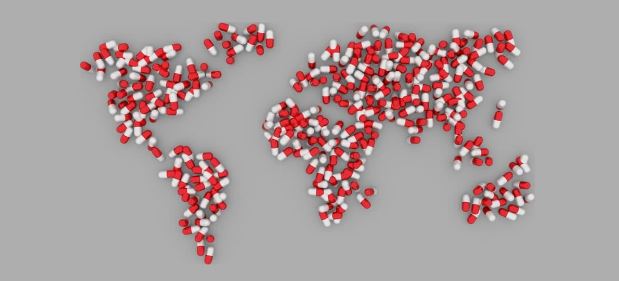 Fake medication is a pressing concern in Kenya. Though the problem exists in every country — wherever there’s money to be made through cutting corners and exploiting customers — the World Health Organization estimates that one in every 10 medical products sold or provided in countries middle-income or below is “substandard or falsified”.
Fake medication is a pressing concern in Kenya. Though the problem exists in every country — wherever there’s money to be made through cutting corners and exploiting customers — the World Health Organization estimates that one in every 10 medical products sold or provided in countries middle-income or below is “substandard or falsified”.
Receive (and use) the wrong drug, and the best outcome a buyer can hope for is no substantial reaction. After all, counterfeit medication can cause serious harm, or even kill. The internet has seriously exacerbated the matter through making it easy for amateur sellers to reach shoppers who don’t know how to verify expertise online — The Independent Pharmacy ran a UK study at the start of 2019 and found that 83% of respondents don’t know how to check seller safety.
But just as technology expanded the severity of this issue through the internet, it can reduce it by making it easier and cheaper to identify fraudulent products. Here’s how nascent developments are providing new options for Kenya’s medical industry:
IoT supply chain tracking
The internet of things (IoT) sees the smart networking of devices of all kinds, allowing for the improvement of older authentication systems that have typically relied on a maximum of two points of verification in the supply process: production completion, and provision to the buyer.
Additionally, simply checking serial numbers and flagging up potential issues clearly isn’t enough (warnings can be ignored), and they’ve been aimed at medical professionals in hospital environments as opposed to end consumers.
Rather than relying on the internal tracking systems of medical providers, an IoT supply chain tracking system can endow each medical product with a publicly-accessible history confirming where it came from, when it changed hands, and how it was stored. Any product with a history featuring an unexplained gap or inappropriate conditions can be reasonably written off.
Drug analysis technology
Traditionally, the verification of an unconfirmed drug has been a time-consuming process requiring an expert to carry out a full analysis, but new technology is changing this: portable hyperspectral imaging, specifically.
Each drug can have its chemical makeup recorded in a public database, so when a product warrants questioning, it can simply be scanned using a mobile device to determine the legitimacy at a high rate of accuracy. This technology is already being used in Kenya.
Companies such as RxAll, a Nigerian startup, have worked on deploying these devices to drug administration agencies as well as sellers, and with imaging companies such as Specim Oy continuing to develop better and smaller devices, there’s every chance that the technology will be suitable for deployment in smartphone-style handhelds in the near future.
RxAll already has an app available through Android or iOS allowing people to use scanners with mobile devices. One day, it may even be possible for smartphones themselves to have the capability to scan medication through integrated scanning hardware. Making verification as easy as possible will make it vastly harder for sellers to fool buyers.
The state of pharmacy safety regulation
The technology detailed above is extremely promising, but it has a long way to go in Kenya. Illegal pharmaceutical outfits are rife, with 100s having been closed down since 2016, and then there are supposedly-legitimate chemists selling substandard drugs.
Frustratingly, it’s easy for misinformation to spread when people can place orders through unconventional channels without knowing how or why they can get them verified. Buying or just researching medication online has quickly grown alongside general e-commerce, and when so many people are shopping outside conventional channels, it’s vital that they are protected as much as possible — particularly when some deals are actually illegal.
Unfortunately, it’s extremely difficult to shut down an illegal pharmacy site. This is because it can simply be recreated at a fresh domain in very little time. It’s ultimately the sellers who must be tracked and held accountable (this is much easier said than done). Let’s hope that as technology develops and awareness of this issue grows, it becomes easier to address.






